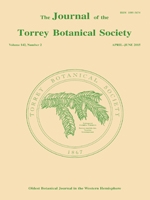Repeated measurements of permanent plots in northeastern U.S. forests provide an opportunity to assess how stand-level changes impact carbon storage in aboveground biomass over time. We used 42 years of census data for >6000 individual trees in a 2.9- ha permanent plot at the Harvard Forest (Petersham, MA, USA) to determine how changes in stand age, structure, and species composition affect carbon storage in aboveground biomass in a Quercus-Acer forest. From 1969 to 2011, the biomass of live trees increased linearly (R2 = 0.99, p = 0.0002), from 150 Mg ha−1 to 268 Mg ha−1, confirming that this ca. 110-year-old stand is still in the aggradation phase of stand development. Over time, a higher proportion of the stand's biomass occurs in large trees. Quercus rubra L. (red oak) accounts for >80 percent of the increase in aboveground biomass due to the rapid growth of dominant stems and low canopy mortality rates. Changes in the biomass of live Acer rubrum L. (red maple) stagnated after 1991, in contrast with region-wide increases, while the proportion of total biomass in subordinate Betula alleghaniensis Britton (yellow birch), Betula lenta L. (black birch), Fagus grandifolia Ehrh. (American beech), and Castanea dentata (Marshall) Borkh. (American chestnut) increased. In the absence of major canopy disturbance we predict that Q. rubra dominance will continue to increase and the stand will steadily accrue carbon for the next century.
How to translate text using browser tools
1 April 2015
Forty years of forest measurements support steadily increasing aboveground biomass in a maturing, Quercus-dominant northeastern forest
Katherine Eisen
ACCESS THE FULL ARTICLE
<
Previous Article
|
Acer rubrum
forest productivity
forest succession
Quercus rubra





